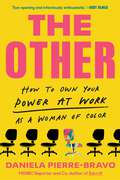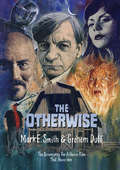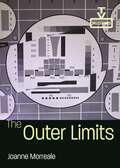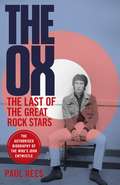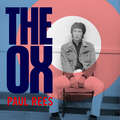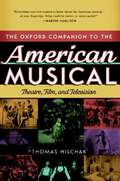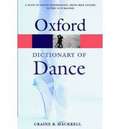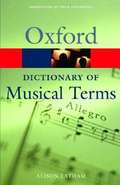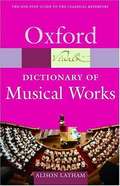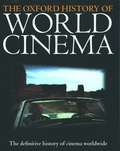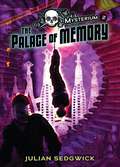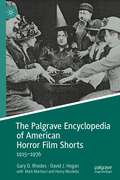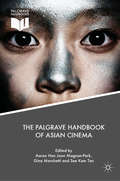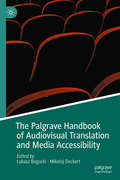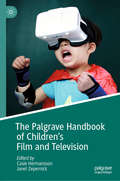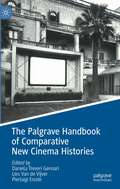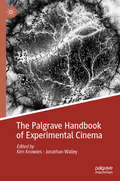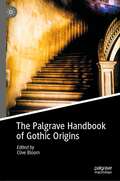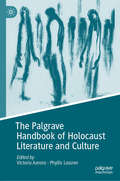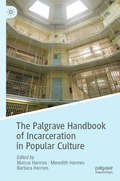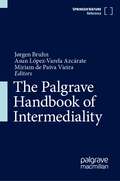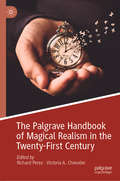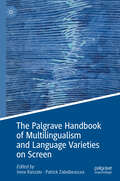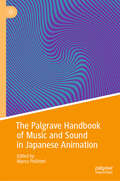- Table View
- List View
The Other: How to Own Your Power at Work as a Woman of Color
by Daniela Pierre-Bravo2023 Int'l Latino Book Award Honorable Mentions This important book focuses on how women of color, children of immigrants, and other minoritized groups are predisposed to workplace imposter syndrome—and charts a path forward for self-advocacy and advancement. For women of color and children of immigrants, who are the &“the other&” at work, there's a different threshold of belonging that creates a false feeling of inadequacy. It can lead to being overwhelmed, overworked, and overlooked. The Other shatters the unspoken expectations for you to stay in your lane and gives you the tools to build unshakable confidence and a career that excels--on your own terms. Bestselling author and MSNBC reporter Daniela-Pierre Bravo spent many years undocumented and in the shadows as an immigrant from Chile, working odd jobs to pay her way through school. Like many other women of color she became an expert shape shifter in order to chameleon her way around professional environments that felt out of reach. When Daniela became a DACA recipient, she finally felt that she&’d made it, rising through the ranks in her career. But she quickly realized that no matter how much success she achieved, she always felt she had to prove her worth as &“the other.&” In The Other, Daniela shares her journey and those of other women to help you recognize your power in the workplace outside of the white gaze. She drives you to reshape the way you think about career advancement without losing your sense of identity and helps you see how to use your differences as an advantage. Smart, revealing, and loaded with practical steps, The Other is a framework for how to effectively advocate for yourself, become your biggest believer, claim the spaces in your career that are rightfully yours.
The Otherwise: The Screenplay for a Horror Film That Never Was
by Graham Duff Mark E SmithThe first ever publication of Mark E. Smith's supernatural film treatment, co-authored with Graham Duff.In 2015 Mark E. Smith of The Fall and screenwriter Graham Duff co-wrote the script for a horror feature film called The Otherwise. The story involved The Fall recording an EP in an isolated recording studio on Pendle Hill. The Lancashire landscape is not only at the mercy of a satanic biker gang, it's also haunted by a gaggle of soldiers who have slipped through time from the Jacobite Rebellion.However, every film production company who saw the script said it was 'too weird' to ever be made. The Otherwise is weird. Yet it's also witty, shocking and genuinely scary. Now the screenplay is published for the first time, alongside photographs, drawings and handwritten notes. The volume also contains previously unpublished transcripts of conversations between Smith and Duff, where they discuss creativity, dreams, musical loves (from Can to acid house) and favourite films (from Britannia Hospital to White Heat). Smith also talks candidly about his youth and mortality, in exchanges that are both touching and extremely funny.
The Outer Limits (TV Milestones Series)
by Joanne MorrealeIn this TV Milestone, author Joanne Morreale highlights the differences of The Outer Limits (ABC 1963–65) from typical programs on the air in the 1960s. Morreale argues that the show provides insight into changes in the television industry as writers turned to genre fiction—in this case, a hybrid of science fiction and horror—to provide veiled social commentary. The show illustrates the tension between networks who wanted mainstream entertainment and the independent writer-producers, Leslie Stevens and Joseph Stefano, who wanted to use the medium to challenge viewers. In five chapters, The Outer Limitsmakes a case for the show’s deployment of gothic melodrama and science fiction tropes, unique televisual characteristics, and creative adaptation of many cultural sources to interrogate the relationship between humans and technology in a way that continues to influence contemporary debate in such shows as Star Trek, The X-Files, and Black Mirror. Underlying the arguments is the eerie notion of The Outer Limits as a disruptive force on television at the time, purposely making audiences uncomfortable. For example, in its iconic opening credit sequence a disembodied "Control Voice" claims to be taking over the television as images mimic signal interference. Other themes convey Cold War paranoia, ambivalence about the Kennedy era "New Frontier," and anxiety about the burgeoning military-industrial-governmental complex. The book points out that The Outer Limits presaged what came to be known as "quality" television. While most episodes followed the lowbrow tradition of televised science fiction by adapting previously published stories and films, the series elevated the genre by rearticulating it through themes and images drawn from myth, literature, and the art film. The Outer Limits is lucid yet accessible, well researched and argued, with enlightening discussions of specific episodes even as it gives attention to broader television history and theory. It will be of special interest to scholars and students of television and media studies, as well as fans of science fiction.
The Ox: The Last of the Great Rock Stars: The Authorised Biography of The Who's John Entwistle
by Paul ReesThe definitive no-holds-barred biography of John Entwistle, The Who's legendary bass guitaristIt is an unequivocal fact that in terms of rock bands, the Beatles, the Rolling Stones and the Who represent Year Zero; the beginning of all things, ground-breakers all. To that end, John Entwistle - the Who's beloved bassist - is also without question one of the most important and influential figures in the annals of rock. He is also among an even more rarefied few by virtue of his being such a fascinating, transfixing and gloriously oversized character. However, Entwistle has not been the subject of a major biography. Likely, this was due to no-one being able to gain close access to the subject himself: the still in many other respects enigmatic Entwistle's enduring legacy has been carefully guarded by his surviving family. With the full co-operation of the Entwistle family, The Ox will correct this oversight and in doing so, shine a long overdue light on one of the single greatest, and most impactful figures in rock history.Drawing on his own notes for an unfinished autobiography that he started before his death in 2002 (and which will be quoted from extensively), as well as his personal archives and interviews with his family and friends, The Ox will give readers a never-before-seen glimpse into the two very distinct poles of John Entwistle. On the one hand, he was the rock star incarnate, being larger than life, self-obsessed to a fault, and proudly and almost defiantly so. Extravagant with money, he famously shipped two vintage American cars across the Atlantic without having so much as a driver's license, built exponentially bigger and grandiose bars into every home he owned, and amassed an extraordinary collection of possessions, from arachnids, armor, and weaponry, to his patented Cuban-heeled boots. But beneath this fame and flutter, he was also a man of simple tastes and traditional opinions. He was a devoted father and family man who loved nothing more than to wake up to a full English breakfast, or to have a supper of fish, chips, and a pint at his local pub.After his untimely death, many of these stories were shuttered away into the memories of his family, friends, and loved ones, but now, for the first time, The Ox will introduce us to the man behind the myth-the iconic and inimitable John Entwistle.
The Ox: The Last of the Great Rock Stars: The Authorised Biography of The Who's John Entwistle
by Paul Rees'A highly entertaining read' The Times Music Books of the Year'Eye-popping' The Times best summer booksThe definitive no-holds-barred biography of John Entwistle, The Who's legendary bass guitaristIt is an unequivocal fact that in terms of rock bands, the Beatles, the Rolling Stones and the Who represent Year Zero; the beginning of all things, ground-breakers all. To that end, John Entwistle - the Who's beloved bassist - is also without question one of the most important and influential figures in the annals of rock. He is also among an even more rarefied few by virtue of his being such a fascinating, transfixing and gloriously oversized character. However, Entwistle has not been the subject of a major biography. Likely, this was due to no-one being able to gain close access to the subject himself: the still in many other respects enigmatic Entwistle's enduring legacy has been carefully guarded by his surviving family. With the full co-operation of the Entwistle family, The Ox will correct this oversight and in doing so, shine a long overdue light on one of the single greatest, and most impactful figures in rock history.Drawing on his own notes for an unfinished autobiography that he started before his death in 2002 (and which will be quoted from extensively), as well as his personal archives and interviews with his family and friends, The Ox will give readers a never-before-seen glimpse into the two very distinct poles of John Entwistle. On the one hand, he was the rock star incarnate, being larger than life, self-obsessed to a fault, and proudly and almost defiantly so. Extravagant with money, he famously shipped two vintage American cars across the Atlantic without having so much as a driver's license, built exponentially bigger and grandiose bars into every home he owned, and amassed an extraordinary collection of possessions, from arachnids, armor, and weaponry, to his Cuban-heeled boots. But beneath this fame and flutter, he was also a man of simple tastes and traditional opinions. He was a devoted father and family man who loved nothing more than to wake up to a full English breakfast, or to have a supper of fish, chips, and a pint at his local pub.After his untimely death, many of these stories were shuttered away into the memories of his family, friends, and loved ones, but now, for the first time, The Ox will introduce us to the man behind the myth-the iconic and inimitable John Entwistle.
The Oxford Companion to the American Musical: Theatre, Film, and Television
by Thomas S. HischakFrom the silver screen to the Great White Way, small community theatres to television sets, the musical has long held a special place in America's heart and history. Now, in The Oxford Companion to the American Musical, readers who flocked to the movies to see An American in Paris or Chicago, lined up for tickets to West Side Story or Rent, or crowded around their TVs to watch Cinderella or High School Musical can finally turn to a single book for details about them all. For The first time, this popular subject has an engaging and authoritative book as thrilling as the performances themselves. With more than two thousand entries, this illustrated guide offers a wealth of information on musicals, performers, composers, lyricists, producers, choreographers, and much more. Biographical entries range from early stars Fred Astaire, Bing Crosby, Mary Martin, and Mae West to contemporary show-stoppers Nathan Lane, Savion Glover, and Kristin Chenoweth, while composers Irving Berlin, George Gershwin, Richard Rodgers, and Andrew Lloyd Webber all have articles, and the choreography of Bob Fosse, Tommy Tune, and Debbie Allen receives due examination. The plays and films covered range from modern hits like Mamma Mia! and Moulin Rouge! to timeless classics such as Yankee Doodle Dandy and Show Boat. Also, numerous musicals written specifically for television appear throughout, and many entries follow a work--Babes in Toyland for example--as it moves across genres, from stage, to film, to television. The Companion also includes cross references, a comprehensive listing of recommended recordings and further reading, a useful chronology of all the musicals described in the book, plus a complete index of Tony Award and Academy Award winners. Whether you are curious about Singin' in the Rain or Spamalot, or simply adore The Wizard of Oz or Grease, this well-researched and entertaining resource is the first place to turn for reliable information on virtually every aspect of the American musical. THOMAS HISCHAK is Professor of Theatre at the State University of New York College at Cortland. He is the author of sixteen books on theatre, film, and popular music, including The Oxford Companion to American Theatre; the textbook Theatre as Human Action; and the award-winning American Musical Theatre Song Encyclopedia. He is also the author of twenty published plays.
The Oxford Dictionary of Dance
by Debra Craine Judith MackrellThis dance dictionary is most marked by its inclusivity, covering ballet, capoeira, flamenco, hip-hop, jazz, Kabuki, modern, contemporary, raqs sharqi, salsa, tango, tap, and ballroom.
The Oxford Dictionary of Musical Terms
by Alison LathamPrinted music and writing about music involve the use of complex systems of notation and a wealth of technical terms in several languages. The Concise Oxford Dictionary of Musical Terms provides clear, succinct, definitions of a comprehensive range of the musical terms, in English and other European languages, that are likely to be encountered in Western music, including in jazz and popular musical genres. Over 2,500 A-Z entries range across a spectrum of subjects, among them: rhythm, metre, forms, genres, pitch, scales, chords, harmony and counterpoint, notational systems, composition and analysis, performance practice, tempo, expression, musical periods, artistic movements, computer applications, acoustics, and many more. Entries provide etymologies, and are fully cross-referenced. Some are illustrated with music examples and tables. An appendix lists all composers mentioned in the Dictionary, with their dates. It is an ideal book for students and teachers of music - it covers all the terms required in the SMAB musical theory exams - as well as for professional musicians, those learning to play musical instruments, and members of choirs, and musical groups. It will also be a useful quick reference book for concert-goers, CD-collectors, and radio listeners.
The Oxford Dictionary of Musical Works
by Alison LathamAnyone who listens to or plays classical music often wants to put the pieces they encounter in context - to check information ranging from who wrote the piece, or the date of its first performance, to how it acquired its title, or whether it was commissioned for a specific person or occasion.General dictionaries of music only cover a limited number of musical works, and include very little detail. The new Oxford Dictionary of Musical Works provides short articles on over 1750 musical works from earliest times to the present day, providing a comprehensive but handy reference. Entries encompass a broad spectrum of genres - from opera, ballet, choral and vocal music, orchestral, chamber and instrumental pieces, to nicknamed works, collections, national anthems, hymn tunes, and traditional melodies. Each entry outlines the genre to which the piece belongs; the librettist or author of the text, including any literary source; the number of acts or movements; the scoring - including details of the instrumentalists and vocalists needed to perform the piece; how it came to be commissioned; the place and date of its first performance; any subsequent arrangements or revisions; and any additional important or entertaining information.
The Oxford Guide to Word Games
by Tony Augarde A. J. AugardeRiddles such as this are just one of the forms of linguistic gymnastics explored in this invaluable source-book. Unique in its thematic and historical approach to the subject, it will tell you everything you ever wanted to know about word games and wordplay, and is entertaining as well as informative. The Oxford Guide to Word Games quickly established itself as the authoritative work on the subject when it was first published in 1984. It not only described all the major word games but also traced their origins and placed them in their social context. Now thoroughly revised, enlarged, and updated to make it even more valuable and comprehensive, this edition includes several new chapters, covering topics such as homonyms and slips of the tongue. New material has also been added on many topics including crossword clues, blends, and kangaroo words. Book jacket.
The Oxford History of World Cinema
by Geoffrey Nowell-SmithIn The Oxford History of World Cinema, an international team of film historians traces the history of this enduringly popular entertainment medium. Covering all aspects of its development, stars, studios, and cultural impact, the book celebrates and chronicles over one hundred years of diverse achievement from westerns to the New Wave, from animation to the avant-garde, and from Hollywood to Hong Kong.
The Palace of Memory (Mysterium #2)
by Julian SedgwickDanny Woo has just escaped from the jaws of death. But he's still haunted by the suspicious deaths of his parents, who were the star performers in a radical traveling circus, the Mysterium. When he discovers that the Mysterium is re-forming in Barcelona—without him—he's devastated. But after learning that the Mysterium's enemies may be active in Barcelona, he rushes to warn his friends. Could there be a traitor within the company itself? If Danny wants to live long enough to find the answers, he will need all the skills his parents taught him. He senses that everything is linked to his parents' deaths . . . and to the clues they left behind.
The Palgrave Encyclopedia of American Horror Film Shorts: 1915–1976
by Gary D. Rhodes David J. HoganThe Palgrave Encyclopedia of American Horror Film Shorts chronicles for the first time over 1,500 horror and horror-related short subjects theatrically released between 1915, at the dawn of the feature film era when shorts became a differentiated category of cinema, and 1976, when the last of the horror-related shorts were distributed to movie theaters. Individual entries feature plot synopses, cast and crew information, and – where possible – production histories and original critical reviews. A small number of the short subjects catalogued herein are famous; such as those featuring the likes of Buster Keaton, Laurel and Hardy, The Three Stooges, Bugs Bunny, and Daffy Duck; but the bulk are forgotten. The diverse content of these shorts includes ghosts, devils, witches, vampires, skeletons, mad scientists, monsters, hypnotists, gorillas, dinosaurs, and so much more, including relevant nonfiction newsreels. Their rediscovery notably rewrites many chapters of the history of horror cinema, from increasing our understanding of the sheer number horror films that were produced and viewed by audiences to shedding light on particular subgenres and specific narrative and historical trends.
The Palgrave Handbook of Asian Cinema
by Gina Marchetti Aaron Han Magnan-Park See Kam TanThis collection offers new approaches to theorizing Asian film in relation to the history, culture, geopolitics and economics of the continent. Bringing together original essays written by established and emerging scholars, this anthology transcends the limitations of national borders to do justice to the diverse ways in which the cinema shapes Asia geographically and imaginatively in the world today. From the revival of the Silk Road as the “belt and road” of a rising China to historical ruminations on the legacy of colonialism across the continent, the authors argue that the category of “Asian cinema” from Turkey to the edges of the Pacific continues to play a vital role in cutting-edge film research. This handbook will serve as an essential guide for committed scholars, students, and all those interested in the past, present, and possible future of Asian cinema in the 21st century.
The Palgrave Handbook of Audiovisual Translation and Media Accessibility (Palgrave Studies in Translating and Interpreting)
by Łukasz Bogucki Mikołaj DeckertThis handbook is a comprehensive and up-to-date resource covering the booming field of Audiovisual Translation (AVT) and Media Accessibility (MA). Bringing together an international team of renowned scholars in the field of translation studies, the handbook surveys the state of the discipline, consolidates existing knowledge, explores avenues for future research and development, and also examines methodological and ethical concerns. This handbook will be a valuable resource for advanced undergraduate and postgraduate students, early-stage researchers but also experienced scholars working in translation studies, communication studies, media studies, linguistics, cultural studies and foreign language education.
The Palgrave Handbook of Children's Film and Television
by Casie Hermansson Janet ZepernickThis volume explores film and television for children and youth. While children’s film and television vary in form and content from country to country, their youth audience, ranging from infants to “screenagers”, is the defining feature of the genre and is written into the DNA of the medium itself. This collection offers a contemporary analysis of film and television designed for this important audience, with particular attention to new directions evident in the late twentieth and early twenty-first centuries. With examples drawn from Iran, China, Korea, India, Israel, Eastern Europe, the Philippines, and France, as well as from the United States and the United Kingdom, contributors address a variety of issues ranging from content to production, distribution, marketing, and the use of film, both as object and medium, in education. Through a diverse consideration of media for young infants up to young adults, this volume reveals the newest trends in children’s film and television and its role as both a source of entertainment and pedagogy.
The Palgrave Handbook of Comparative New Cinema Histories
by Daniela Treveri Gennari Lies Van de Vijver Pierluigi ErcoleThis Handbook offers new and previously unexplored comparative approaches to the field of New Cinema History. The volume brings together contributions focussing on historical and contemporary comparative case studies of cinema-going practices, cinema distribution, exhibition and reception from a global perspective. Engaging with a wealth of empirical and archive-based sources the volume explores a wide range of methodological and theoretical approaches. This Handbook is a key addition to debates on the relationship between film industry and cinema-going practices across different political and cultural geographical dimensions.
The Palgrave Handbook of Experimental Cinema
by Kim Knowles Jonathan WalleyThis book is a collection of newly commissioned essays by established and emerging scholars that maps out the current landscape of experimental cinema studies and sets agendas for future work in the field. Introducing new critical methodologies and calling overdue attention to neglected artists, regions, and topics, the contributions to this volume reassess and reassert experimental cinema as a site of formal exploration and interrogation as well as resistance to institutional, political, and social norms. This collection articulates what it means for experimental cinema to be these things in the contemporary moment, staking out new directions in thinking about the subject not only as a growing sub-field of cinema studies, but as an artistic and scholarly tradition in dialogue with art history, visual culture, philosophy, and the sciences. The contributions reflect a diversity of voices and perspectives, weaving together theoretical, poetic, and personal modes of writing and traversing questions of form, emotion, materiality, nationality, postcoloniality, the body, and ecology.
The Palgrave Handbook of Gothic Origins
by Clive BloomThis handbook provides a comprehensive overview of research on the Gothic Revival. The Gothic Revival was based on emotion rather than reason and when Horace Walpole created Strawberry Hill House, a gleaming white castle on the banks of the Thames, he had to create new words to describe the experience of gothic lifestyle. Nevertheless, Walpole’s house produced nightmares and his book The Castle of Otranto was the first truly gothic novel, with supernatural, sensational and Shakespearean elements challenging the emergent fiction of social relationships. The novel’s themes of violence, tragedy, death, imprisonment, castle battlements, dungeons, fair maidens, secrets, ghosts and prophecies led to a new genre encompassing prose, theatre, poetry and painting, whilst opening up a whole world of imagination for entrepreneurial female writers such as Mary Shelley, Joanna Baillie and Ann Radcliffe, whose immensely popular books led to the intense inner landscapes of the Bronte sisters. Matthew Lewis’s The Monk created a new gothic: atheistic, decadent, perverse, necrophilic and hellish. The social upheaval of the French Revolution and the emergence of the Romantic movement with its more intense (and often) atheistic self-absorption led the gothic into darker corners of human experience with a greater emphasis on the inner life, hallucination, delusion, drug addiction, mental instability, perversion and death and the emerging science of psychology. The intensity of the German experience led to an emphasis on doubles and schizophrenic behaviour, ghosts, spirits, mesmerism, the occult and hell. This volume charts the origins of this major shift in social perceptions and completes a trilogy of Palgrave Handbooks on the Gothic—combined they provide an exhaustive survey of current research in Gothic studies, a go-to for students and researchers alike.
The Palgrave Handbook of Holocaust Literature and Culture
by Victoria Aarons Phyllis LassnerThe Palgrave Handbook of Holocaust Literature and Culture reflects current approaches to Holocaust literature that open up future thinking on Holocaust representation. The chapters consider diverse generational perspectives—survivor writing, second and third generation—and genres—memoirs, poetry, novels, graphic narratives, films, video-testimonies, and other forms of literary and cultural expression. In turn, these perspectives create interactions among generations, genres, temporalities, and cultural contexts. The volume also participates in the ongoing project of responding to and talking through moments of rupture and incompletion that represent an opportunity to contribute to the making of meaning through the continuation of narratives of the past. As such, the chapters in this volume pose options for reading Holocaust texts, offering openings for further discussion and exploration. The inquiring body of interpretive scholarship responding to the Shoah becomes itself a story, a narrative that materially extends our inquiry into that history.
The Palgrave Handbook of Incarceration in Popular Culture
by Marcus Harmes Meredith Harmes Barbara HarmesThe Handbook of Incarceration in Popular Culture will be an essential reference point, providing international coverage and thematic richness. The chapters examine the real and imagined spaces of the prison and, perhaps more importantly, dwell in the uncertain space between them. The modern fixation with ‘seeing inside’ prison from the outside has prompted a proliferation of media visions of incarceration, from high-minded and worthy to voyeuristic and unrealistic. In this handbook, the editors bring together a huge breadth of disparate issues including women in prison, the view from ‘inside’, prisons as a source of entertainment, the real worlds of prison, and issues of race and gender. The handbook will inform students and lecturers of media, film, popular culture, gender, and cultural studies, as well as scholars of criminology and justice.
The Palgrave Handbook of Intermediality
by Jørgen Bruhn Asun López-Varela Azcárate Miriam de Paiva VieiraThis handbook provides an extensive overview of traditional and emerging research areas within the field of intermediality studies, understood broadly as the study of interrelations among all forms of communicative media types, including transmedial phenomena. Section I offers accounts of the development of the field of intermediality - its histories, theories and methods. Section II and III then explore intermedial facets of communication from ancient times until the 21st century, with discussion on a wide range of cultural and geographical settings, media types, and topics, by contributors from a diverse set of disciplines. It concludes in Section IV with an emphasis on urgent societal issues that an intermedial perspective might help understand.
The Palgrave Handbook of Magical Realism in the Twenty-First Century
by Richard Perez Victoria A. ChevalierThe Palgrave Handbook of Magical Realism in the Twenty-First Century examines magical realism in literatures from around the globe. Featuring twenty-seven essays written by leading scholars, this anthology argues that literary expressions of magical realism proliferate globally in the twenty-first century due to travel and migrations, the shrinking of time and space, and the growing encroachment of human life on nature. In this global context, magical realism addresses twenty-first-century politics, aesthetics, identity, and social/national formations where contact between and within cultures has exponentially increased, altering how communities and nations imagine themselves. This text assembles a group of critics throughout the world—the Americas, Europe, Africa, Asia, the Middle East, and Australia—who employ multiple theoretical approaches to examine the different ways magical realism in literature has transitioned to a global practice; thus, signaling a new stage in the history and development of the genre.
The Palgrave Handbook of Multilingualism and Language Varieties on Screen
by Irene Ranzato Patrick ZabalbeascoaThis handbook brings together contributions from the main experts in the field of multilingualism and language varieties (including dialects, accents, sociolects, and idiolects of specific speech communities) as expressed in fictional dialogue on-screen in films, and television series. The chapters included in the volume cover both the representation of these varieties and multilingual situations on screen as well as their translation into a range of languages. The handbook will thus be an essential resource for scholars and students in diverse fields including translation studies, audiovisual translation, linguistics, dialectology, film and television studies.
The Palgrave Handbook of Music and Sound in Japanese Animation (Palgrave Studies in Sound)
by Marco PellitteriThis handbook fills a substantial gap in the international academic literature on animation at large, on music studies, and on the aural dimensions of Japanese animation more specifically. It offers a unique contribution at the intersection between music and popular culture studies on the one hand, and research on Japanese animated productions (often called ‘anime’) as popular art forms and formats of entertainment, on the other. The book is designed as a reference work consisting of an organic sequence of theory-grounded essays on the development of music, sounds, and voices in Japanese animation for cinema and television since the 1930s. Each chapter deals with a phase of this history, focusing on composers and performers, films, series, and genres used in the soundtracks for animations made in Japan. The chapters also offer valuable interviews with prominent figures of music in Japanese animation, as well as chapter boxes clarifying specific aspects.
